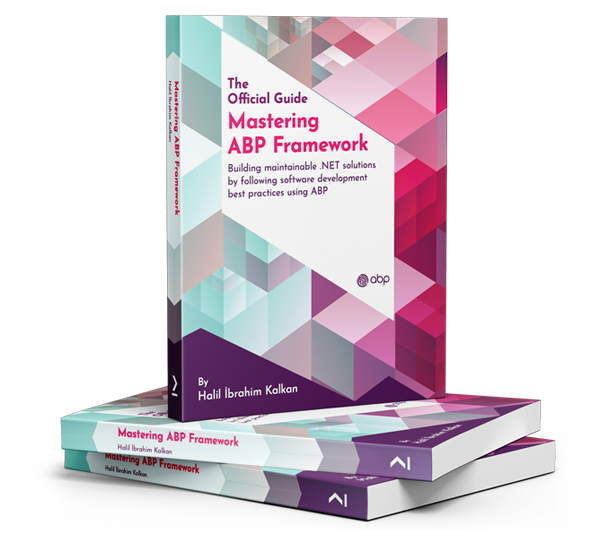- Exception message and full stack trace: Volo.Abp.Data.AbpDbConcurrencyException: The database operation was expected to affect 1 row(s), but actually affected 0 row(s); data may have been modified or deleted since entities were loaded. See https://go.microsoft.com/fwlink/?LinkId=527962 for information on understanding and handling optimistic concurrency exceptions.
---> Microsoft.EntityFrameworkCore.DbUpdateConcurrencyException: The database operation was expected to affect 1 row(s), but actually affected 0 row(s); data may have been modified or deleted since entities were loaded. See https://go.microsoft.com/fwlink/?LinkId=527962 for information on understanding and handling optimistic concurrency exceptions.
at Microsoft.EntityFrameworkCore.Update.AffectedCountModificationCommandBatch.ThrowAggregateUpdateConcurrencyExceptionAsync(RelationalDataReader reader, Int32 commandIndex, Int32 expectedRowsAffected, Int32 rowsAffected, CancellationToken cancellationToken)
at Microsoft.EntityFrameworkCore.Update.AffectedCountModificationCommandBatch.ConsumeResultSetWithRowsAffectedOnlyAsync(Int32 commandIndex, RelationalDataReader reader, CancellationToken cancellationToken)
at Microsoft.EntityFrameworkCore.Update.AffectedCountModificationCommandBatch.ConsumeAsync(RelationalDataReader reader, CancellationToken cancellationToken)
at Microsoft.EntityFrameworkCore.Update.ReaderModificationCommandBatch.ExecuteAsync(IRelationalConnection connection, CancellationToken cancellationToken)
at Microsoft.EntityFrameworkCore.Update.ReaderModificationCommandBatch.ExecuteAsync(IRelationalConnection connection, CancellationToken cancellationToken)
at Microsoft.EntityFrameworkCore.SqlServer.Update.Internal.SqlServerModificationCommandBatch.ExecuteAsync(IRelationalConnection connection, CancellationToken cancellationToken)
at Microsoft.EntityFrameworkCore.Update.Internal.BatchExecutor.ExecuteAsync(IEnumerable
1 commandBatches, IRelationalConnection connection, CancellationToken cancellationToken) at Microsoft.EntityFrameworkCore.Update.Internal.BatchExecutor.ExecuteAsync(IEnumerable1 commandBatches, IRelationalConnection connection, CancellationToken cancellationToken) at Microsoft.EntityFrameworkCore.Update.Internal.BatchExecutor.ExecuteAsync(IEnumerable1 commandBatches, IRelationalConnection connection, CancellationToken cancellationToken) at Microsoft.EntityFrameworkCore.Storage.RelationalDatabase.SaveChangesAsync(IList1 entries, CancellationToken cancellationToken) at Microsoft.EntityFrameworkCore.ChangeTracking.Internal.StateManager.SaveChangesAsync(IList1 entriesToSave, CancellationToken cancellationToken) at Microsoft.EntityFrameworkCore.ChangeTracking.Internal.StateManager.SaveChangesAsync(StateManager stateManager, Boolean acceptAllChangesOnSuccess, CancellationToken cancellationToken) at Microsoft.EntityFrameworkCore.SqlServer.Storage.Internal.SqlServerExecutionStrategy.ExecuteAsync[TState,TResult](TState state, Func4 operation, Func4 verifySucceeded, CancellationToken cancellationToken) at Microsoft.EntityFrameworkCore.DbContext.SaveChangesAsync(Boolean acceptAllChangesOnSuccess, CancellationToken cancellationToken) at Volo.Abp.EntityFrameworkCore.AbpDbContext1.SaveChangesAsync(Boolean acceptAllChangesOnSuccess, CancellationToken cancellationToken) --- End of inner exception stack trace --- at Volo.Abp.EntityFrameworkCore.AbpDbContext1.SaveChangesAsync(Boolean acceptAllChangesOnSuccess, CancellationToken cancellationToken) at Volo.Abp.Domain.Repositories.EntityFrameworkCore.EfCoreRepository2.InsertAsync(TEntity entity, Boolean autoSave, CancellationToken cancellationToken) at Castle.DynamicProxy.AsyncInterceptorBase.ProceedAsynchronous[TResult](IInvocation invocation, IInvocationProceedInfo proceedInfo) at Volo.Abp.Castle.DynamicProxy.CastleAbpMethodInvocationAdapterWithReturnValue1.ProceedAsync() at Volo.Abp.Uow.UnitOfWorkInterceptor.InterceptAsync(IAbpMethodInvocation invocation) at Volo.Abp.Castle.DynamicProxy.CastleAsyncAbpInterceptorAdapter1.InterceptAsync[TResult](IInvocation invocation, IInvocationProceedInfo proceedInfo, Func3 proceed) at Volo.Abp.OpenIddict.Tokens.AbpOpenIddictTokenStore.CreateAsync(OpenIddictTokenModel token, CancellationToken cancellationToken) at OpenIddict.Core.OpenIddictTokenManager1.CreateAsync(TToken token, CancellationToken cancellationToken) at OpenIddict.Core.OpenIddictTokenManager1.CreateAsync(OpenIddictTokenDescriptor descriptor, CancellationToken cancellationToken) at OpenIddict.Core.OpenIddictTokenManager1.OpenIddict.Abstractions.IOpenIddictTokenManager.CreateAsync(OpenIddictTokenDescriptor descriptor, CancellationToken cancellationToken) at OpenIddict.Server.OpenIddictServerHandlers.Protection.CreateTokenEntry.HandleAsync(GenerateTokenContext context) at OpenIddict.Server.OpenIddictServerDispatcher.DispatchAsync[TContext](TContext context) at OpenIddict.Server.OpenIddictServerDispatcher.DispatchAsync[TContext](TContext context) at OpenIddict.Server.OpenIddictServerHandlers.GenerateAuthorizationCode.HandleAsync(ProcessSignInContext context) at OpenIddict.Server.OpenIddictServerDispatcher.DispatchAsync[TContext](TContext context) at OpenIddict.Server.OpenIddictServerDispatcher.DispatchAsync[TContext](TContext context) at OpenIddict.Server.AspNetCore.OpenIddictServerAspNetCoreHandler.SignInAsync(ClaimsPrincipal user, AuthenticationProperties properties) at Microsoft.AspNetCore.Authentication.AuthenticationService.SignInAsync(HttpContext context, String scheme, ClaimsPrincipal principal, AuthenticationProperties properties) at Microsoft.AspNetCore.Mvc.Infrastructure.ResourceInvoker.<InvokeNextResultFilterAsync>g__Awaited|30_0[TFilter,TFilterAsync](ResourceInvoker invoker, Task lastTask, State next, Scope scope, Object state, Boolean isCompleted) at Microsoft.AspNetCore.Mvc.Infrastructure.ResourceInvoker.Rethrow(ResultExecutedContextSealed context) at Microsoft.AspNetCore.Mvc.Infrastructure.ResourceInvoker.ResultNext[TFilter,TFilterAsync](State& next, Scope& scope, Object& state, Boolean& isCompleted) at Microsoft.AspNetCore.Mvc.Infrastructure.ResourceInvoker.<InvokeResultFilters>g__Awaited|28_0(ResourceInvoker invoker, Task lastTask, State next, Scope scope, Object state, Boolean isCompleted) at Microsoft.AspNetCore.Mvc.Infrastructure.ResourceInvoker.<InvokeNextResourceFilter>g__Awaited|25_0(ResourceInvoker invoker, Task lastTask, State next, Scope scope, Object state, Boolean isCompleted) at Microsoft.AspNetCore.Mvc.Infrastructure.ResourceInvoker.Rethrow(ResourceExecutedContextSealed context) at Microsoft.AspNetCore.Mvc.Infrastructure.ResourceInvoker.Next(State& next, Scope& scope, Object& state, Boolean& isCompleted) at Microsoft.AspNetCore.Mvc.Infrastructure.ResourceInvoker.<InvokeFilterPipelineAsync>g__Awaited|20_0(ResourceInvoker invoker, Task lastTask, State next, Scope scope, Object state, Boolean isCompleted) at Microsoft.AspNetCore.Mvc.Infrastructure.ResourceInvoker.<InvokeAsync>g__Logged|17_1(ResourceInvoker invoker) at Microsoft.AspNetCore.Mvc.Infrastructure.ResourceInvoker.<InvokeAsync>g__Logged|17_1(ResourceInvoker invoker) at Microsoft.AspNetCore.Routing.EndpointMiddleware.<Invoke>g__AwaitRequestTask|7_0(Endpoint endpoint, Task requestTask, ILogger logger) at Volo.Abp.AspNetCore.Serilog.AbpSerilogMiddleware.InvokeAsync(HttpContext context, RequestDelegate next) at Microsoft.AspNetCore.Builder.UseMiddlewareExtensions.InterfaceMiddlewareBinder.<>c__DisplayClass2_0.<<CreateMiddleware>b__0>d.MoveNext() --- End of stack trace from previous location --- at Volo.Abp.AspNetCore.Auditing.AbpAuditingMiddleware.InvokeAsync(HttpContext context, RequestDelegate next) at Volo.Abp.AspNetCore.Auditing.AbpAuditingMiddleware.InvokeAsync(HttpContext context, RequestDelegate next) at Microsoft.AspNetCore.Builder.UseMiddlewareExtensions.InterfaceMiddlewareBinder.<>c__DisplayClass2_0.<<CreateMiddleware>b__0>d.MoveNext() --- End of stack trace from previous location --- at Microsoft.AspNetCore.Authorization.AuthorizationMiddleware.Invoke(HttpContext context) at Volo.Abp.AspNetCore.Security.Claims.AbpDynamicClaimsMiddleware.InvokeAsync(HttpContext context, RequestDelegate next) at Microsoft.AspNetCore.Builder.UseMiddlewareExtensions.InterfaceMiddlewareBinder.<>c__DisplayClass2_0.<<CreateMiddleware>b__0>d.MoveNext() --- End of stack trace from previous location --- at Volo.Abp.AspNetCore.Uow.AbpUnitOfWorkMiddleware.InvokeAsync(HttpContext context, RequestDelegate next) at Microsoft.AspNetCore.Builder.UseMiddlewareExtensions.InterfaceMiddlewareBinder.<>c__DisplayClass2_0.<<CreateMiddleware>b__0>d.MoveNext() --- End of stack trace from previous location --- at Volo.Abp.AspNetCore.ExceptionHandling.AbpExceptionHandlingMiddleware.InvokeAsync(HttpContext context, RequestDelegate next) at Volo.Abp.AspNetCore.ExceptionHandling.AbpExceptionHandlingMiddleware.InvokeAsync(HttpContext context, RequestDelegate next) at Microsoft.AspNetCore.Builder.UseMiddlewareExtensions.InterfaceMiddlewareBinder.<>c__DisplayClass2_0.<<CreateMiddleware>b__0>d.MoveNext() --- End of stack trace from previous location --- at Volo.Abp.AspNetCore.MultiTenancy.MultiTenancyMiddleware.InvokeAsync(HttpContext context, RequestDelegate next) at Microsoft.AspNetCore.Builder.UseMiddlewareExtensions.InterfaceMiddlewareBinder.<>c__DisplayClass2_0.<<CreateMiddleware>b__0>d.MoveNext() --- End of stack trace from previous location --- at Microsoft.AspNetCore.Builder.ApplicationBuilderAbpOpenIddictMiddlewareExtension.<>c__DisplayClass0_0.<<UseAbpOpenIddictValidation>b__0>d.MoveNext() --- End of stack trace from previous location --- at Microsoft.AspNetCore.Authentication.AuthenticationMiddleware.Invoke(HttpContext context) at Volo.Abp.AspNetCore.Security.AbpSecurityHeadersMiddleware.InvokeAsync(HttpContext context, RequestDelegate next) at Microsoft.AspNetCore.Builder.UseMiddlewareExtensions.InterfaceMiddlewareBinder.<>c__DisplayClass2_0.<<CreateMiddleware>b__0>d.MoveNext() --- End of stack trace from previous location --- at Microsoft.AspNetCore.Diagnostics.ExceptionHandlerMiddlewareImpl.<Invoke>g__Awaited|10_0(ExceptionHandlerMiddlewareImpl middleware, HttpContext context, Task task) - Steps to reproduce the issue:
I have reproduced on several occasions this exception when several users at the same time are logged out due to inactivity time, the user sees a page with a 409 concurrency error. This is happening frequently, it is quite annoying for the users. I've seen it happen to other people in the thread, with no apparent solution. https://abp.io/support/questions/7520/OpenIddict-TokenProvider-Concurrency-Exception
2 Answer(s)
-
0
When multiple users are logged out simultaneously (such as due to inactivity), you may encounter the
AbpDbConcurrencyExceptionwith a 409 error. This is caused by ABP's optimistic concurrency control, which is used to ensure data consistency when multiple operations attempt to modify the same data concurrently. In your case, the issue occurs during OpenIddict token operations, where multiple requests try to update or delete the same token record at the same time.This is a known scenario with OpenIddict and ABP, especially when tokens are being revoked or deleted in parallel (e.g., mass logout or session expiration). The concurrency exception is thrown because the database operation expects to affect one row, but the row may have already been modified or deleted by another concurrent operation.
How to Handle
Understand Optimistic Concurrency: ABP uses optimistic concurrency by default for aggregate roots and entities implementing
IHasConcurrencyStamp. When a concurrency conflict is detected, an exception is thrown to prevent data loss.- See: https://abp.io/docs/latest/framework/infrastructure/concurrency-check
OpenIddict Token Concurrency: When multiple logout or token revocation requests happen at the same time, only one will succeed in updating/deleting the token, and the others will fail with a concurrency exception. This is expected behavior to ensure token integrity.
User Experience: The 409 error page is shown to the user because the exception is not handled gracefully. You can catch the
AbpDbConcurrencyExceptionglobally and show a more user-friendly message or redirect the user to the login page.Example (in your exception handling middleware or global error handler):
app.Use(async (context, next) => { try { await next(); } catch (AbpDbConcurrencyException) { // Redirect to login or show a custom message context.Response.Redirect("/Account/Login"); } });No Data Loss: This exception does not cause data loss; it only prevents conflicting updates. The user should simply retry the operation or re-authenticate.
Further Reading and Community Discussion: This issue and its handling are discussed in the ABP support forum:
- https://abp.io/support/questions/7520/OpenIddict-TokenProvider-Concurrency-Exception
Summary
- The exception is a result of ABP's optimistic concurrency control.
- It is expected when multiple concurrent operations affect the same token.
- Handle the exception gracefully to improve user experience.
- No data is lost; users can retry or re-login.
Sources:
- https://abp.io/docs/latest/framework/infrastructure/concurrency-check
- https://abp.io/support/questions/7520/OpenIddict-TokenProvider-Concurrency-Exception
This response was generated by AI. If it didn’t solve your problem, feel free to post a new answer — our support team will jump in to help you soon.
-
0
hi
Can you try this?
https://abp.io/support/questions/8933/Intermittent-Login-Failure-After-Upgrading-ABP-Framework-to-v9#answer-3a189b11-6314-b51d-08de-b775c7bdf450
Thanks

























































